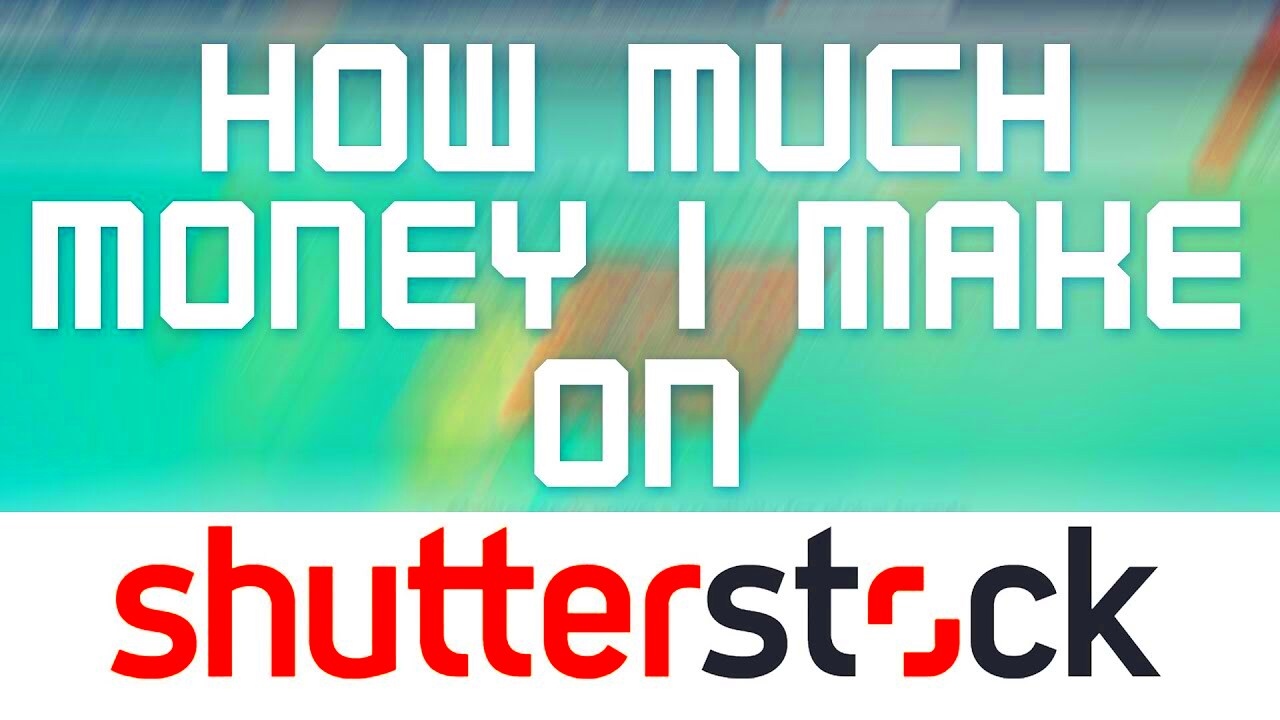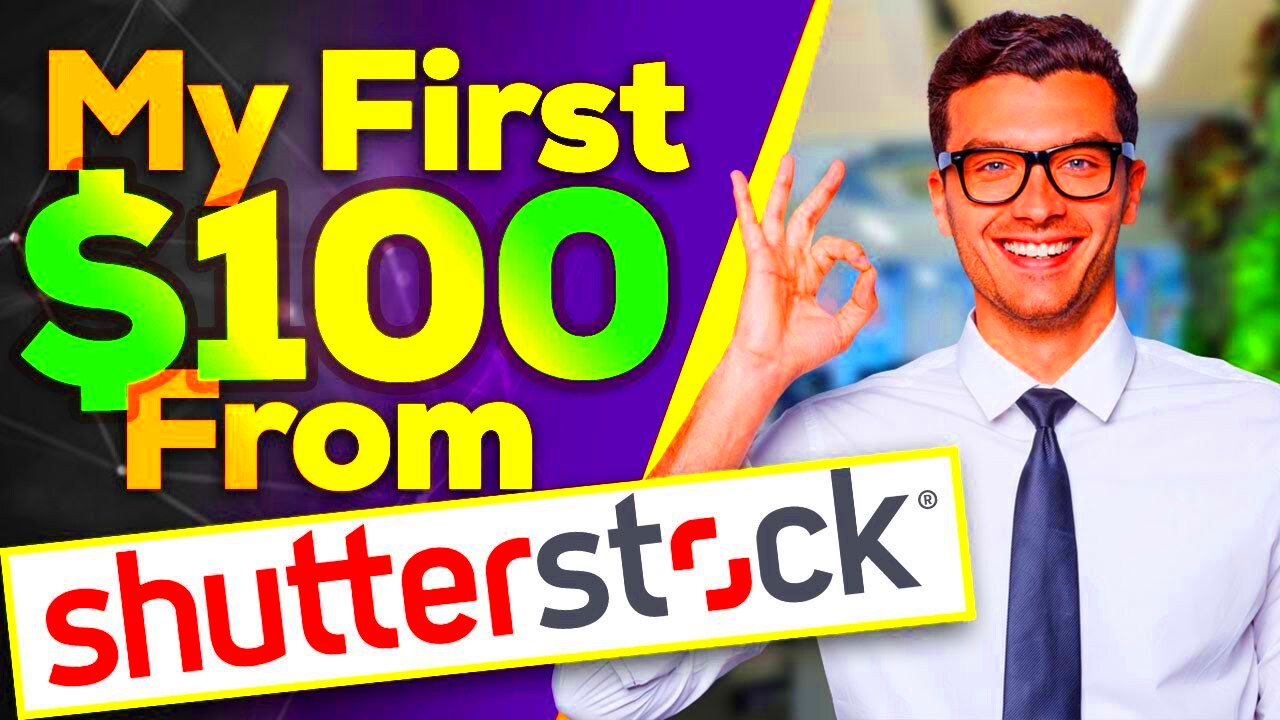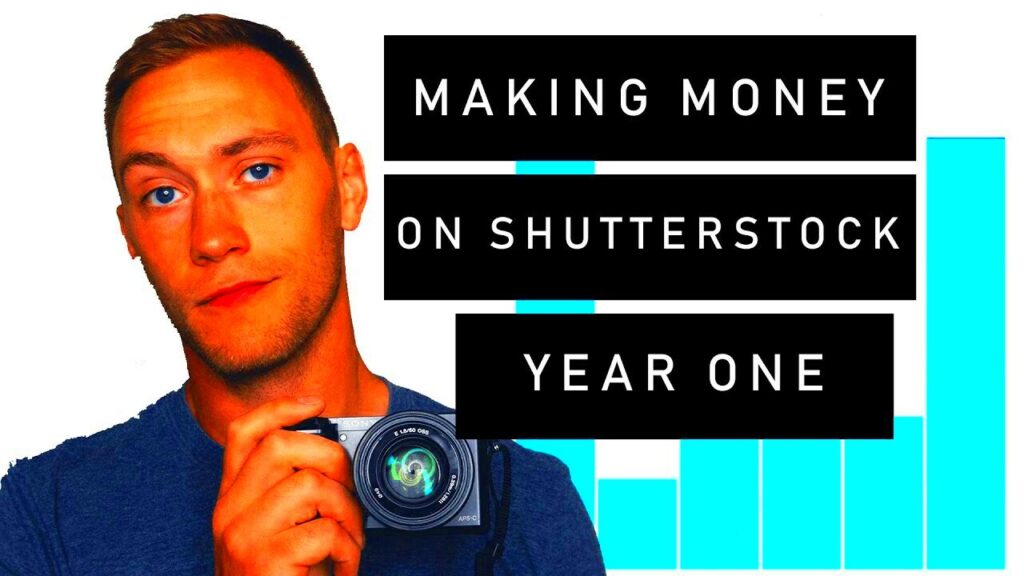However, it should be noted that there are different types of subscriptions that Shutterstock has for users, which depends on them for pricing their images or videos. This fact can make a huge difference in case someone is concerned about earning money from it.
How Contributors Earn Money on Shutterstock

I’m going to be very frank; earning from Shutterstock isn’t one of those “get-rich-quick” schemes. But it is still one of the most sure and steady ways to make a living if you are well acquainted with the system. This is how it operates: every time someone downloads your image you receive a royalty payment. The amount of royalty earned may vary based on various factors including, but not limited to, the type of client subscription package purchased, size of image as well as licensing model used. For instance, download subscriptions earn lower amounts per download but have more frequent downloads while on-request purchases render higher payments.
When I made my first sale of a picture it seemed very big even though it was just a little. The realization that there is someone who appreciates my work filled me with joy indeed. However, as I continued exploring this platform; high-quality pictures in trendy areas would not be enough if profit were to be substantial hence the need for a plan. Some suggestions on how I improved earnings include uploading good-quality images in current hot niches, comprehending the keywords system, and regularly queuing up additional uploads.
If you are starting, it would be good to have realistic expectations. It is like a marathon and not a sprint, but with time, it becomes a reliable source of income.
Also Read This: How to Delete Contacts from LinkedIn: A Privacy and Network Management Guide
Factors That Affect Earnings on Shutterstock

Acquiring cash from Shutterstock does not solely depend on how many pictures one loads, but also requires a combination of factors. In simple terms:
- Quality of Content: Shutterstock’s customers are looking for professional-grade images. That means high resolution, good composition, and relevance. If your image isn't of professional quality, it likely won't sell.
- Demand for Niche: Just because you’re passionate about a subject doesn’t mean it will sell. Researching popular categories like business, technology, and lifestyle can significantly increase your chances of earning more.
- Consistency in Uploading: Like I said earlier, it’s not a one-time effort. Regularly uploading new content can help you stay visible and improve your chances of making sales.
- Search Engine Optimization (SEO): Don’t underestimate the power of good keywords. Using the right tags, descriptions, and titles will make it easier for buyers to find your images.
- Royalties Structure: Shutterstock uses a tiered royalty system. The more you sell, the higher your royalty percentage. It may start small, but as you cross certain earning thresholds, your payout per download increases.
The act of planting seeds resembles this; planting deliberately in mind with focus on both location and planting processes results into good harvests. After long time thinking I understood it thus making my earnings more predictable than before. Still, like any other platform, a regular income takes time to develop.
Also Read This: Contribute to Adobe Stock and Start Earning from Your Photos
How Royalties Work for Shutterstock Contributors
It is both exhilarating and frightening to grasp the concept of royalties on the Shutterstock platform. Basically, Shutterstock is a royalty-based company so that when someone downloads your content, you earn a percentage. Several factors can influence what you make per download. As a newcomer, I was confused by these numbers but soon realized that understanding this complex system was everything to a successful carrier on Shutterstock.
Below is the breakdown:
- Tiered Royalty Structure: Shutterstock uses a tiered system based on your total earnings. When you start, you might earn around 15% per download. But as your earnings increase, so does your percentage, potentially reaching up to 40% for top contributors. It’s like leveling up in a video game!
- Subscription vs. On-Demand Purchases: The type of purchase also plays a role. Subscription downloads generally pay less than on-demand purchases, but they happen more frequently. This means you can see your earnings accumulate steadily, which can be quite satisfying.
- Image Size: Larger image sizes often yield higher royalties. If someone opts for a larger version of your image, you get a bigger payout, making it worthwhile to upload various sizes.
While passing on the Shutterstock site, please do not forget about keeping your record of sales. I usually write down my monthly income in order to capture trends and comprehend what works. It is advisable to optimize one’s strategy for generating more money.
Also Read This: How to Cancel Your Adobe Stock Subscription in Simple Steps
Best Practices to Maximize Earnings
My first impression about Shutterstock after joining was uploading few good images for a start was sufficient for making money. However, I soon realized there is more than that into it. Below are some of the practices I have discovered to help you increase your income:
- Quality Over Quantity: Focus on creating high-quality, compelling images. Clients are willing to pay more for visually stunning content. I still remember the time I invested extra effort in a sunset photo—it's now one of my bestsellers!
- Keyword Optimization: Use relevant keywords and tags to help your images appear in searches. Spend some time researching trending keywords in your niche. You'd be surprised how much this can affect visibility.
- Stay Current with Trends: Pay attention to market trends. Seasonal themes, holidays, and current events often drive sales. I often create content that reflects upcoming festivals or events, and it’s paid off.
- Engage with the Community: Join forums and social media groups for Shutterstock contributors. Sharing experiences and tips can lead to new opportunities and insights that can boost your earnings.
- Be Consistent: Regular uploads keep you relevant. Set a schedule for uploading new content. I aim for at least a few images each week to keep my portfolio fresh.
The things I have illustrated above have made sense not just financially but also professionally in terms of love for thing I do. The truth is that it is intentionality and audience consciousness that really count.
Also Read This: Exploring the Number of Dailymotion Channels Available
Common Misconceptions About Shutterstock Earnings
When I initially told my friends that I was contributing towards Shutterstock, most of them raised eyebrows assuming it was a shortcut to amass wealth without much effort. On the contrary, things are not what they seem. Here are some myths regarding the income generation process on this website that should be cleared up:
- It’s Not a Quick Money-Making Scheme: Many people assume that uploading a few photos will lead to immediate profits. In reality, building a successful portfolio takes time and effort. Like a garden, you need to nurture it.
- Quality Matters More Than Quantity: While it might seem that uploading hundreds of images will yield more sales, this isn't always true. One stunning, high-quality image can outperform dozens of mediocre ones.
- All Contributors Earn the Same: Earnings vary significantly among contributors. Those who invest time in learning the platform, understanding market trends, and creating high-quality content generally earn more.
- Royalty Percentages are Fixed: Many newcomers believe they will always earn the same percentage per download. The tiered structure means your earnings can grow as you become more successful.
- It’s Easy to Predict Earnings: Earnings can be unpredictable, influenced by factors like market demand and seasonal trends. I’ve had months where sales were slow and others where they soared!
Comprehending these misunderstandings has enabled me to control my hopes and start my Shutterstock expedition with an unambiguous frame of reference. By remaining receptive and ready for learning, I have discovered that my journey is truly satisfying and monetarily gratifying.
Also Read This: How Shutterstock Payment Works and How to Receive Your Earnings
FAQs About Earning Money from Shutterstock
With an experience diving into the universe of Shutterstock, there were an infinite number of inquiries rotating in my thoughts. Gradually, I discovered that other contributors were also asking the same questions. Below are some questions that are often asked about making money on Shutterstock with my reflections:
- How much can I earn on Shutterstock? Earnings can vary widely. Some contributors make a few dollars a month, while others earn thousands. It all depends on the quality of your work and how well you market it. Personally, my income steadily increased as I refined my approach.
- Do I need to be a professional photographer to succeed? Not necessarily. While professional experience can be beneficial, what matters most is the quality and originality of your images. I started as an amateur and learned through practice and feedback.
- How long does it take to see earnings? It varies. Some contributors see sales within weeks, while others take months to gain traction. Consistent uploads and engaging with trends can accelerate this process, as I learned through trial and error.
- Can I sell the same images on other platforms? Yes! Shutterstock allows you to sell your images elsewhere as long as you own the rights. This diversification can significantly boost your earnings, something I actively pursued.
- Are there any costs involved in submitting images? No, uploading to Shutterstock is free. However, it’s important to invest time in creating high-quality images and optimizing your portfolio for visibility.
Hopefully, these frequently asked questions will help aspiring Shutterstock contributors feel a little less confused about their common questions. It is important to note that every path taken is distinct and oftentimes hard-work brings successful outcomes in the end.
Conclusion: Is Shutterstock a Profitable Platform for Creators?
Shutterstock can be a very profitable platform for creators but it requires dedication and strategic thought. It is not some kind of magical money making source. Actually, it’s a gradual build-up that pays dividends to those who have invested their time and craft into it over years. Contributors generally need to focus on quality, keep up with trends and know how the royalties work if they are to create a continual stream of income. From my own experience, I have come to understand that patience is the key as well as continuous adaptation to the digital content world’s changes. For anyone willing to put in effort, Shutterstock provides an easy way in which you can receive cash by doing what you love doing most.
